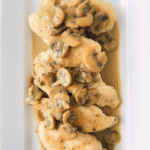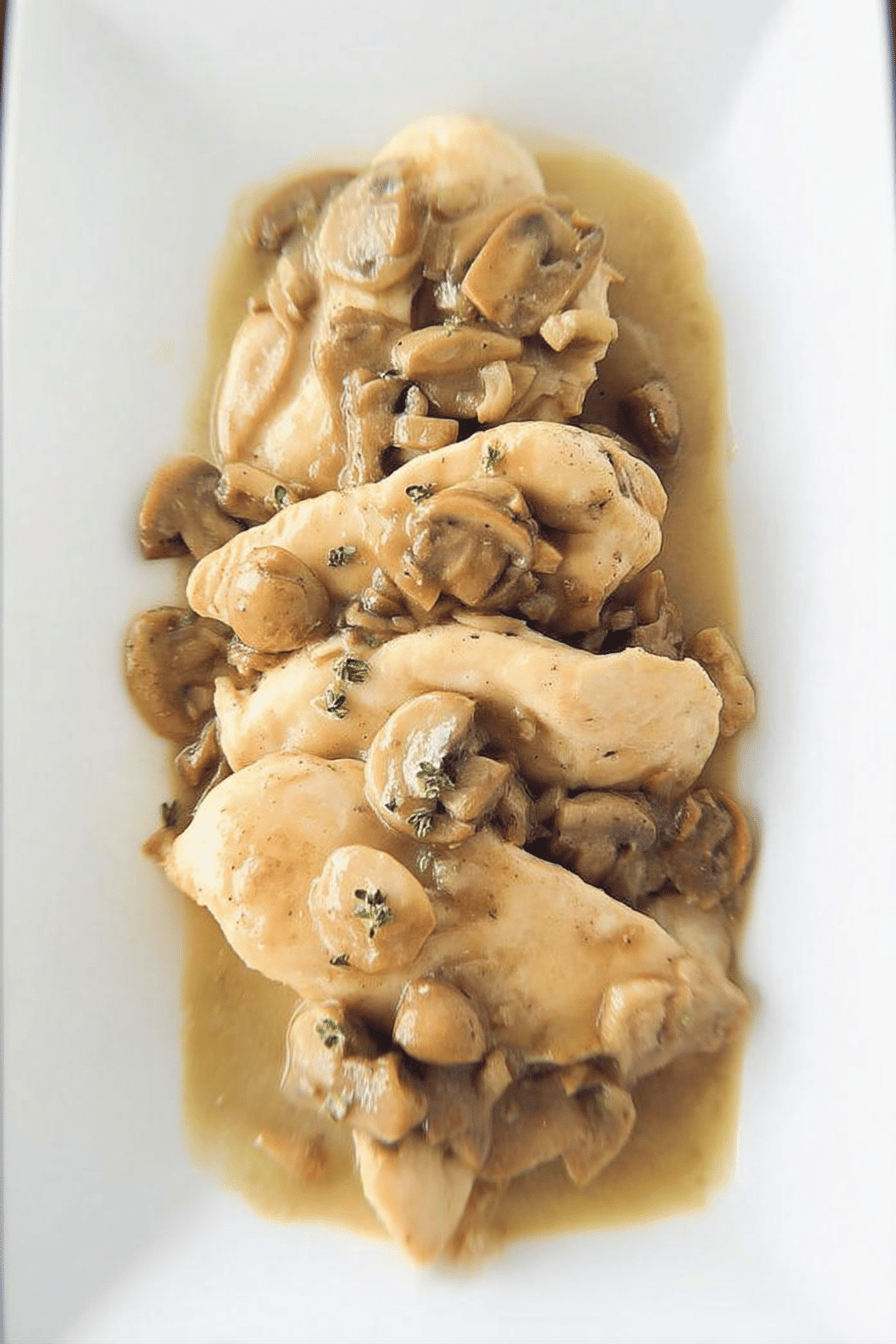Why You’ll Love This Japanese Cheesecake
- Ease of preparation: This Japanese cheesecake recipe is approachable and quick to make, requiring minimal ingredients and straightforward steps. Whether you’re a beginner or an experienced baker, the process is designed to be simple while delivering consistent results.
- Health benefits: Featuring lighter ingredients compared to traditional cheesecakes, this dessert offers a lower-calorie alternative with a high protein content. The delicate balance of eggs and cream cheese provides essential nutrients without the heaviness typical of dense cheesecakes.
- Versatility: The recipe can be adapted to accommodate different dietary needs. Whether you prefer gluten-free flours, vegan substitutes, or low-calorie sweeteners, this Japanese cheesecake can be tailored to suit various preferences without sacrificing its signature fluffiness and flavor.
- Distinctive flavor: Its unique jiggly and fluffy texture, paired with subtle sweetness, distinguishes Japanese cheesecake from traditional styles. The soufflé-like lightness combined with a rich creamy taste offers an unforgettable dessert experience.
Jump To
- 1. Why You’ll Love This Japanese Cheesecake
- 2. Essential Ingredients for Japanese Cheesecake
- 3. How to Prepare the Perfect Japanese Cheesecake: Step-by-Step Guide
- 4. Dietary Substitutions to Customize Your Japanese Cheesecake
- 5. Mastering Japanese Cheesecake: Advanced Tips and Variations
- 6. How to Store Japanese Cheesecake: Best Practices
- 7. FAQs: Frequently Asked Questions About Japanese Cheesecake
- 8. japanese cheesecake
Essential Ingredients for Japanese Cheesecake
- 5 egg whites – form the meringue that gives the cheesecake its airy texture
- ¼ teaspoon cream of tartar (or substitute with vinegar or lemon juice) – stabilizes egg whites and helps maintain volume
- 50g (1/4 cup) fine granulated sugar – sweetens the meringue gently
- 5 egg yolks – enrich the batter with creaminess and structure
- 226g (8 ounces) full-fat cream cheese – provides the creamy base essential for flavor and texture
- 55g (1/4 cup) unsalted European-style butter (82% fat recommended) – adds richness and smoothness
- 125ml (1/2 cup) whole milk – helps achieve a smooth, slightly liquid batter
- 50g (1/4 cup) fine granulated sugar – sweetens the cake batter
- 2 tablespoons (15g) cornstarch – contributes to lightness and stability
- 34g (1/4 cup) flour (all-purpose or low-protein pastry flour; rice flour or mochiko for gluten-free option) – provides structure without heaviness
- Optional: vanilla extract, lemon juice, matcha powder, cocoa powder – to add unique flavor variations
Special Dietary Options:
- Vegan: Substitute cream cheese with plant-based cream cheese and replace eggs with aquafaba (chickpea water) for meringue.
- Gluten-free: Use rice flour or mochiko instead of wheat flour to maintain the delicate texture.
- Low-calorie: Opt for low-fat cream cheese and sugar alternatives such as erythritol or stevia.
How to Prepare the Perfect Japanese Cheesecake: Step-by-Step Guide
First Step: Preheat the Oven and Prepare Water Bath
Preheat your oven to 320°F (160°C). Prepare a bain-marie by filling a baking tray with hot water. This water bath helps regulate baking temperature and humidity, preventing cracks and ensuring even cooking.
Second Step: Separate Eggs and Prepare Yolk Batter
Carefully separate the egg yolks from the whites to avoid contamination. In a pot over low heat, gently melt butter, cream cheese, and ¼ cup (50g) sugar, stirring until smooth. Remove from heat and whisk in the egg yolks one at a time until fully incorporated.
Third Step: Add Dry Ingredients and Milk
Sift cornstarch and flour into the yolk mixture, stirring gently to blend until smooth and lump-free. Add the milk and any optional flavorings like vanilla or lemon juice, mixing well to create a smooth, slightly liquid batter.
Fourth Step: Beat Egg Whites to Meringue
In a clean bowl, beat egg whites with cream of tartar starting at a low speed until foamy. Gradually add ¼ cup (50g) sugar a tablespoon at a time, increasing speed until stiff but not overly stiff peaks form. Avoid overbeating to prevent deflation.
Fifth Step: Fold the Meringue into the Batter
Gently fold about one-third of the meringue into the yolk batter to lighten it. Then carefully fold in the remaining meringue, cutting through the center and sweeping around the bowl, lifting the mixture to retain airiness without deflation. This step is key to the jiggly texture.
Sixth Step: Bake the Cheesecake
Line an 8-inch cake pan with parchment paper. Pour the batter into the pan and place it in the water bath inside the preheated oven. Bake for 30 minutes with the door closed, then 20 minutes with the door slightly ajar, followed by 20 minutes with the door closed again. Adjust baking times and oven temperature (up to 330°F/165°C) if the cake browns too quickly or fails to rise.
Final Step: Cool and Serve
The cheesecake is done when the top is golden-brown and the center has a slight jiggle but feels springy. Remove from oven and let rest inside for 10 minutes. Carefully invert onto a plate for a smooth top. Serve warm for maximum fluffiness and jiggle, or chill for a firmer chiffon-like texture. Store leftovers in an airtight container in the refrigerator for 2-3 days; freezing is not recommended.
| Step | Action | Time |
|---|---|---|
| 1 | Preheat oven and prepare Bain-Marie | 10 minutes |
| 2 | Melt butter, cream cheese, and sugar; add egg yolks | 5 minutes |
| 3 | Sift flours and mix in milk/flavorings | 5 minutes |
| 4 | Beat egg whites to stiff peaks | 10 minutes |
| 5 | Fold meringue into batter | 5 minutes |
| 6 | Bake in water bath | 70 minutes |
| 7 | Cool and serve | 10-15 minutes |
Dietary Substitutions to Customize Your Japanese Cheesecake
Protein and Main Component Alternatives
- Replace cream cheese with plant-based cream cheese made from soy, almond, or coconut for vegan options.
- Swap egg whites with aquafaba (chickpea water) to create a vegan meringue alternative.
Vegetable, Sauce, and Seasoning Modifications
- Add flavor by mixing in citrus zest, matcha powder, or cocoa powder for exciting variations without extra calories.
- Use natural sweeteners like stevia or monk fruit in place of sugar for a low-calorie version.
- Incorporate vanilla or almond extracts as subtle enhancers of flavor, adjusting to taste.
Mastering Japanese Cheesecake: Advanced Tips and Variations
- Pro cooking techniques: Use a fine mesh sieve to sift flours and starch carefully to ensure no lumps, resulting in a smooth batter. Employ delicate folding methods when incorporating meringue to retain air and create the signature light texture.
- Flavor variations: Introduce matcha powder for a green tea cheesecake, yuzu zest for citrus brightness, or black sesame seeds for a nutty contrast.
- Presentation tips: Dust the finished cheesecake with powdered sugar, garnish with fresh seasonal fruit, or provide dollops of whipped cream for elegance.
- Make-ahead options: Prepare the cheesecake a day before serving to allow flavors to meld. Store chilled and serve cold or gently warmed depending on preference.
How to Store Japanese Cheesecake: Best Practices
Refrigeration
Keep the Japanese cheesecake in an airtight container in the refrigerator for 3 to 4 days to preserve its delicate texture and freshness.
Freezing
Wrap the cheesecake tightly with plastic wrap and foil before freezing to protect it. Thaw overnight in the refrigerator before serving. Freezing is not generally recommended as it can alter the soft, fluffy texture.
Reheating
To warm, gently heat individual slices in the microwave or oven at low temperatures, avoiding overheating to maintain moisture and texture.
Meal Prep Considerations
Slice into individual portions before storing for convenient grab-and-go servings and extended shelf life.
FAQs: Frequently Asked Questions About Japanese Cheesecake
What exactly is Japanese cheesecake and how is it different from regular cheesecake?
Japanese cheesecake, also called Japanese cotton cheesecake or soufflé cheesecake, is lighter and fluffier than traditional Western-style cheesecake. It combines cream cheese with whipped egg whites, giving it a soft, airy texture similar to a sponge cake. Unlike dense and creamy cheesecakes, Japanese cheesecake has a slightly jiggly center and a less sweet, more delicate flavor, making it popular for those who prefer a less rich dessert.
How can I prevent my Japanese cheesecake from cracking during baking?
Cracks usually result from baking at too high a temperature or uneven heat distribution. To avoid cracking, bake the cheesecake at a lower temperature and use a water bath to provide gentle, moist heat. Also, avoid over-beating the batter and mix the egg whites carefully to maintain stability. If cracks do appear, frosting or fruit toppings can hide them without impacting taste.
Why does my Japanese cheesecake sink or deflate after baking, and how do I fix it?
Deflation happens when the egg whites are underbeaten or overbeaten, or if the batter is overmixed after folding in the meringue. Also, underbaking or opening the oven door too soon can cause sinking. To prevent this, beat egg whites to stiff glossy peaks, fold gently without losing volume, and bake until the center is set but still slightly jiggly. Let the cake cool gradually in the oven with the door slightly open.
Can I add flavors to Japanese cheesecake, and what are some popular options?
Yes, flavors can be incorporated by mixing ingredients into the egg yolk batter before folding in the egg whites. Common additions include matcha powder for a green tea version, cocoa powder for chocolate, or lemon zest for a citrus twist. Use about 1-2 tablespoons depending on the flavor’s strength to maintain the cheesecake’s light texture.
What’s the best way to store leftover Japanese cheesecake to keep its texture?
Store leftover Japanese cheesecake in an airtight container in the refrigerator for up to 2-3 days. Avoid freezing as it can alter the soft, fluffy texture and cause it to become dense or dry after defrosting. For best taste, bring refrigerated cheesecake to room temperature before serving.

japanese cheesecake
- Total Time: 1 hour 35 minutes
- Yield: 8 servings
Description
🍰 Japanese Cheesecake boasts a light, airy, and jiggly texture that makes it a delightful dessert for any occasion.
🥢 This unique cheesecake offers a perfect balance of fluffiness and creamy richness, ideal for pairing with savory steak and shrimp stir fry for a complete meal.
Ingredients
– 5 egg whites
– ¼ teaspoon cream of tartar
– 50g fine granulated sugar
– 5 egg yolks
– 226g full-fat cream cheese
– 55g unsalted European-style butter
– 125ml whole milk
– 50g fine granulated sugar
– 2 tablespoons cornstarch
– 34g flour
– vanilla extract
– lemon juice
– matcha powder
– cocoa powder
Instructions
1-First Step: Preheat the Oven and Prepare Water Bath. Preheat your oven to 320°F (160°C). Prepare a bain-marie by filling a baking tray with hot water. This water bath helps regulate baking temperature and humidity, preventing cracks and ensuring even cooking.
2-Second Step: Separate Eggs and Prepare Yolk Batter. Carefully separate the egg yolks from the whites to avoid contamination. In a pot over low heat, gently melt butter, cream cheese, and ¼ cup (50g) sugar, stirring until smooth. Remove from heat and whisk in the egg yolks one at a time until fully incorporated.
3-Third Step: Add Dry Ingredients and Milk. Sift cornstarch and flour into the yolk mixture, stirring gently to blend until smooth and lump-free. Add the milk and any optional flavorings like vanilla or lemon juice, mixing well to create a smooth, slightly liquid batter.
4-Fourth Step: Beat Egg Whites to Meringue. In a clean bowl, beat egg whites with cream of tartar starting at a low speed until foamy. Gradually add ¼ cup (50g) sugar a tablespoon at a time, increasing speed until stiff but not overly stiff peaks form. Avoid overbeating to prevent deflation.
5-Fifth Step: Fold the Meringue into the Batter. Gently fold about one-third of the meringue into the yolk batter to lighten it. Then carefully fold in the remaining meringue, cutting through the center and sweeping around the bowl, lifting the mixture to retain airiness without deflation. This step is key to the jiggly texture.
6-Sixth Step: Bake the Cheesecake. Line an 8-inch cake pan with parchment paper. Pour the batter into the pan and place it in the water bath inside the preheated oven. Bake for 30 minutes with the door closed, then 20 minutes with the door slightly ajar, followed by 20 minutes with the door closed again. Adjust baking times and oven temperature (up to 330°F/165°C) if the cake browns too quickly or fails to rise.
7-Final Step: Cool and Serve. The cheesecake is done when the top is golden-brown and the center has a slight jiggle but feels springy. Remove from oven and let rest inside for 10 minutes. Carefully invert onto a plate for a smooth top. Serve warm for maximum fluffiness and jiggle, or chill for a firmer chiffon-like texture. Store leftovers in an airtight container in the refrigerator for 2-3 days; freezing is not recommended.
Notes
🥄 Use full-fat cream cheese, whole milk, and good-quality unsalted butter for best flavor and texture.
🍳 Properly separate eggs and beat whites to the right peak stage to maintain volume and prevent deflation.
💧 Bake in a water bath to control temperature and humidity, minimizing cracks and ensuring even baking.
- Prep Time: 20 minutes
- Cooking Time: 1 hour 15 minutes
- Cook Time: 1 hour 15 minutes
- Category: Dessert
- Method: Baking
- Cuisine: Japanese
Nutrition
- Serving Size: 1 slice
- Calories: 270 kcal
- Sugar: 15 g
- Sodium: 110 mg
- Fat: 18 g
- Saturated Fat: 11 g
- Unsaturated Fat: 6 g
- Trans Fat: 0 g
- Carbohydrates: 20 g
- Fiber: 0 g
- Protein: 6 g
- Cholesterol: 110 mg
Keywords: Japanese Cheesecake, Jiggly, Steak, Shrimp



This fluffy creation was a delight to try! 😄 My family couldn’t stop eating it. I added a hint of matcha powder to the mixture for a subtle green tea flavor, and it turned out amazing. Has anyone else tried flavor variations with this recipe?
★★★★★